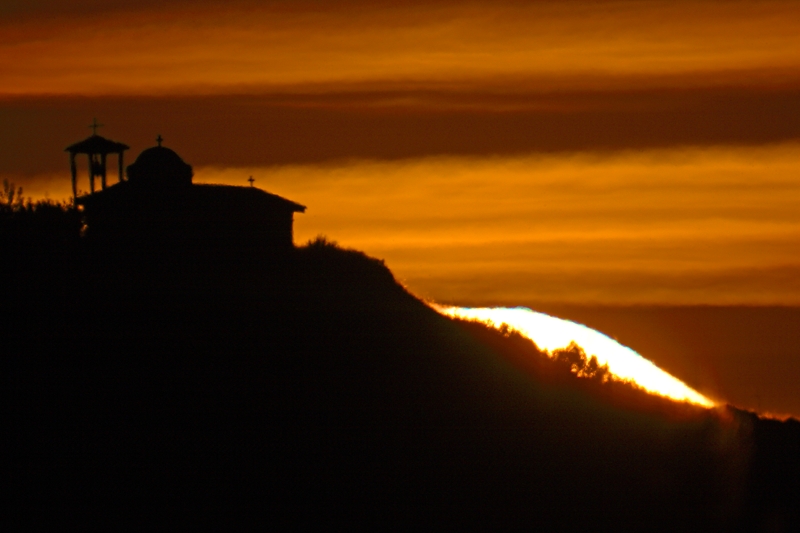
A common misconception is that the sun is larger when it is near the horizon than when it is high overhead. However, this optical illusion is
not true, for the apparent size of the sun is virtually the same when it is rising or setting near the horizon or when viewed overhead (in
fact, it is very slightly smaller when viewed near the horizon due to refraction as well as the greater added distance in observing across the
earth's radius). This illusion has been wrongly attributed to landmarks near the horizon, such as homes and trees, supposedly giving a sense
of perspective and whereas the same perspective is lost when looking at the overhead sun bathed in an empty sky. As noted by
Donald E. Simanek and
Carl J. Wenning, the real reason behind this trick by our brain is
the perception of the sun (or moon) being against a "close" or "distant" foreground and which is lucidly described by the above two references.
However, if we were approach the apparent size of the sun methodically by studying it during perihelion and aphelion, we can detect a small
change using photographic equipment thanks to the elliptical orbit of our planet around the sun which leads to variations in distance (and
apparent size) of the order of about 3.4%. More specifically, at perihelion each January, earth is approximately 147 million km away from sun
whose apparent diameter is about 32.53' whereas, at aphelion each July, earth is approximately 152 million km away and the sun is characterized
with an apparent diameter of about 31.46'. This difference of 5 million km between perihelion and aphelion leads to the slight change in the
apparent diameter of the sun as illustrated by two images of the sun captured six months apart when the sun was near its minimum possible
perihelion (Jan 2/2005) and maximum possible aphelion (Jul 5/2005) and while crossing the local meridian and which are presented
here.
Note: With winter solstice less than a month away, the opportunity was used to pursue the setting sun a few
kilometers from the seaside resort area of Oropos northeast of Athens and whose history dates to the time of the golden age of ancient Greece.
The foreground is the Church of Agia Eleousa which lies atop a mountain at an altitude of approximately 165 meters (500 feet). The photo
was taken from a distance of 3495 meters away to the east of Agia Eleousa so as to yield a reasonable balance in the aspect ratio involving the
foreground church and setting sun as well as to provide the ideal azimuth and altitude for these photos to be possible. A result taken 24 hours
earlier in the presence of some very slight haze using a shorter effective focal length is available
here.
Careful inspection of the image below will reveal the very rare blue flash phenomenon which requires transparent and stable skies to be observed
and only during very brief spurts lasting a few seconds. A photo from the same session but a couple of minutes earlier includes traces of the
blue flash (see here).
A dramatic setting sun against the Church of Agios Sotirios was captured a few weeks earlier from a distance of 2505 meters away in the same
general vicinity (see
here,
here and
here).
Note: For additional photos of the sun and/or full moon against other well-known Greek archaeological grounds
and sites, please click
here and/or
here.
|
Body: Sun Mass: 332,900 x Earth Mean Eq Diameter: 109.1 x Earth R.A / Dec: 16h 10m 03s / -21° 02' 21" Distance: 148 million km Diameter: 32.41 ' Magnitude: -26.8 |
 |
Date: Nov 26, 2009 16:53:09 UT+2 Location: Oropos, Greece Equipment: Takahashi FSQ-106/f5 AP 2x Conv Barlow TeleVue 2x Big Barlow Canon EOS 5D Mk I Baader UV/IR-Cut Filter Exposure(s): 1 x 1/2500 sec ISO 100 RAW Image Format 4368x2912 Image Size Manual Mode Software: Digital Photo Pro V1.6.1.0 Photoshop CS2 Processing: RAW to TIFF (16-bit) conv Resampling (18%) JPG Compression |